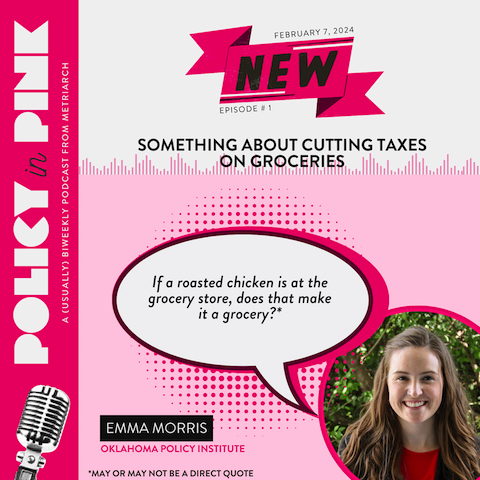Access to Safe and Affordable Housing
Access to Safe and Affordable Housing
Data highlight
Oklahoma ranks 19 of 50 overall for substandard housing. This is how it breaks down:
- Crowded Housing – 2.8% of occupied housing units with more than one person per room (OK ranks 36/50)
- Unclean Water – 5.2% of the OK population served by community water systems had a serious drinking water violation during 2021 (ranked 50/50). The national average is 0.8%
- Lead Paint Exposure – 13.5% of housing stock with potential elevated lead risk due to age of housing (rank 21/50)
HOW WE STACK UP
The percentage of occupied housing units with at least one of four problems: lack of complete kitchen facilities, lack of plumbing facilities, severely crowded, or severely cost-burdened occupants


Source: America’s Health Rankings
YOU MIGHT ALSO LIKE
Definition
Access to safe and affordable housing refers to the ability to obtain housing that is both secure and reasonably priced in relation to their financial means. This embraces the idea that everyone should have the opportunity to live in a home that meets basic safety standards and is affordable without compromising other essential needs.
Nationwide, people of color, the formerly justice involved, and members of the LGBTQ+ community are some of the most likely to experience housing discrimination, which narrows the availability of safe and affordable housing for these groups.
Why we care:
Every individual has the right to safe, decent and affordable housing – having a secure foundation helps children and adults thrive.
Lack of access to safe and affordable housing causes housing insecurity. Housing insecurity can be caused by several factors, such as job insecurity or loss of income, a health emergency, unexpected expenses, a lack of suitable housing options to move into, an eviction history, justice involvement, poor credit, and several other causes. The recent trend of property owners and landlords no longer accepting Housing Choice Vouchers (HCV) has made it even more difficult for families to find suitable housing.
Substandard housing poses risks to the health, safety, and well-being of families. Unhealthy conditions in substandard housing can include the presence of lead, radon gas, carbon monoxide, mold, pests like cockroaches, bedbugs, and rats, and poor temperature control. These unsafe surroundings can cause lead poisoning, allergies, cancer, illnesses, asthma, and other respiratory issues. These health issues often result in missed school or work.
Unfortunately, most families who are experiencing substandard housing are at or below the poverty level. Women, particularly women with children, are more likely to live in substandard housing in Oklahoma due in large part to the gender wage gap. In addition, people of color, formerly justice involved, disabled, and members of the LGBTQ+ community are most likely to experience housing discrimination across the nation, which further narrows the availability of safe and affordable housing for these individuals and families.
Due to continued rising rents and low wages, most people are more likely to spend a large percentage of their income on housing. A worker making minimum wage today cannot afford a two-bedroom apartment in any U.S. state. Oklahoma has the 44th highest housing range in the nation meaning that an individual must earn at least $18/hour or work 99 hours per week at minimum wage to afford a “modest” two bedroom apartment in Oklahoma.
Considerations
When the COVID-19 pandemic hit the US in 2020, millions were already on the verge of eviction and/or homelessness. Oklahoma is consistently a top ten state for residents facing eviction. Demand for housing in Oklahoma and the nation surged following the Covid-19 pandemic. This made finding safe and affordable housing in the state even more difficult and pushed home values up significantly.
This surge in demand for housing tightened an already depressed level of supply. As a result, home values and rents increased significantly in Oklahoma. “While apartment rents in the U.S. declined initially during the pandemic, rents in the Oklahoma City and Tulsa metro areas sustained annual growth of around 3-5% in 2020.” Increased demand for housing in rural Oklahoma caused home values to spike even more than in the metro areas of the state.
Before the pandemic, home values were growing slower across Oklahoma than nationwide. Home values in the U.S. increased at an average annual rate of 6.2% from March 2016 to March 2020, while Oklahoma averaged a 4.9% annual rate. During the pandemic housing boom, home value growth in Oklahoma tracked nationally, growing at around 15% annually from March 2020 to March 2022. Home values in rural areas grew even faster in the same period, at 20% each year.
Even as demand eased over the past year, Oklahoma’s home values continued to grow more than the nation’s. The state grew around 8% year-over-year in March 2023 while U.S. growth fell to 5%, driven by declines in home values in other parts of the country.
NOTE: The title of this indicator was changed from Substandard Housing to Safe and Affordable Housing to be more consistent with data collected and the issue itself.
What we can do:
- Work with cities and municipalities to report and address instances of substandard housing
- Work to improve laws, rules, and codes around housing conditions to ensure tenants are not as frequently subjected to substandard and unsafe housing conditions
- Enforce anti-discrimination housing laws
- Increase legal protection for tenants
- Reduce the length of time evictions stay on household’s records
- Increase minimum wage
- Prioritize interventions such as Permanent Supportive Housing to support persons who have disabling conditions.
- Increase access to benefits that can support housing stability through Medicaid Waivers
This issue brief was written by Metriarch staff as part of our Data Lookbook.
Suggested citation
Metriarch. “Economic Factors,” Data Lookbook (2024). URL: metriarchok.org/access-to-safe-and-affordable-housing.
- Last updated February 12, 2024
Share this page:





